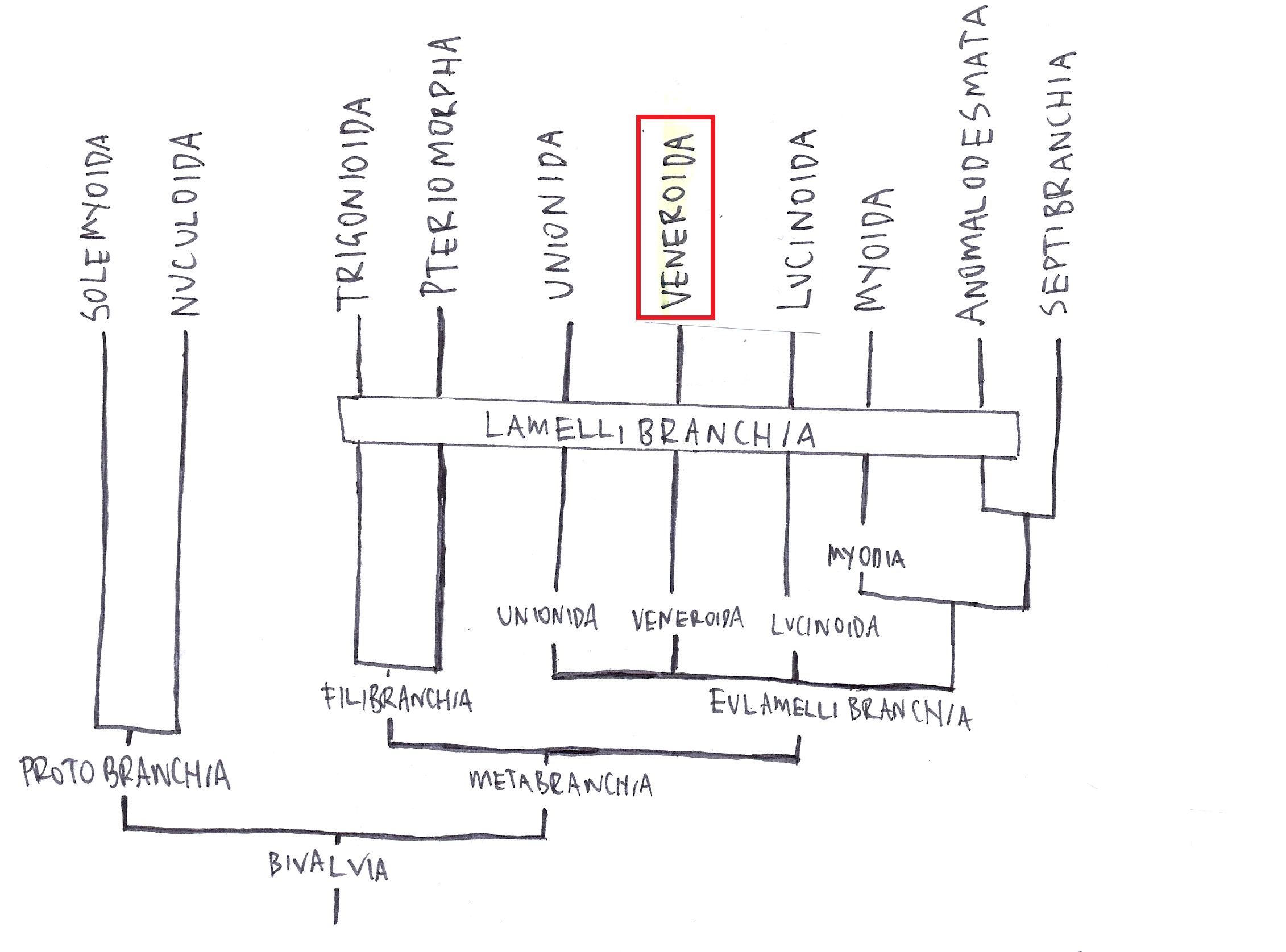Brief Summary
Distribution
Physical Description
Size
Identification Resources
Ecology
Local Distribution
Crypsis
Life History & Behaviour
Feeding
Burrowing
Chemosensory Perception
Reproduction and Larval Biology
Anatomy & Physiology
Morphology
Evolution & Systematics
Fossil History
Phylogeny
Biogeographic Distribution
Conservation & Threats
Human Threats
References & Links
| PHYLOGENY
The the phylogenetic tree below, it is easy to see how deeply imbedded the order Veneroida (which consists of the family Mactridae) is in the group known as the Lamellibranchs. There are three main groups of bivalves based on their feeding diversity, the Protobranchs, Lamellibranch and Septibranch. The loss of the radula and evolution of a bilaterally symetrical shell are accepted to be the first evolutionary step in the bivalves history.
The Protobranchs are the form of bivalve that most accurate represents the ancestoral bivalves. The Protobranch are deposit feeders and have relatively simple gills and internal morpholgy. The gills of protobranchs are a lot smaller than Lamellibranch gills.
The Lamellibranchs make up the vast majority of extant bivalves and include M. rufescens in the order Veneroida. They have much more extensive gills than the Protobranchs and are efficient filter feeders.
The Septibranchs are the only bivalves that don't feed on organic particulate matter. They have an eversible muscular stomach which they egest and use to envelop small organisms.
 |
|